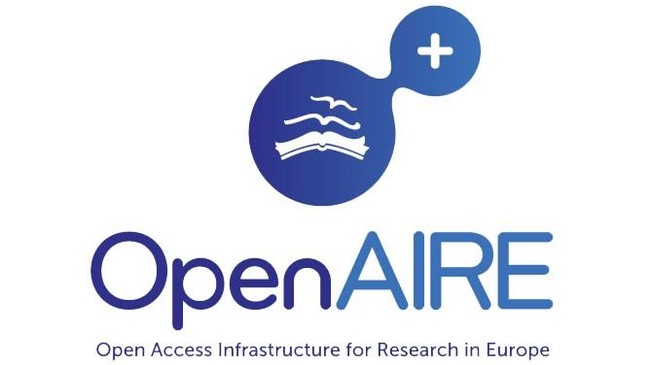Profile Of Combinatorial Reasoning Ability Using Description Tests In Physics Learning Of High School Students
DOI:
https://doi.org/10.21009/03.SNF2020.02.PF.08Abstract
Abstract.
The purpose of this study is to describe the combinatorial reasoning ability of high school students in physics learning and to determine the characteristics and the instrument quality of combinatorial reasoning using written test. The research method used is Analyze Design Development Implementation and Evaluation (ADDIE). The written test has the characteristics to measure the ability of deductive hypothesis between variables, to determine the process of combining student reasoning in solving the sequence and series problems and use all possible alternative answers in solving problem systematically based on the stage of combinatorial reasoning. The combinatorial reasoning test was validated by expert and physics teachers. The research participants are student in six of high school grade eleven who had learn all of the concept in one terms. The results of the research show combinatorial reasoning ability of high school students that 24% of students had a high level of combinatorial reasoning, in this case the students are able to fulfill the combinatorial stages. 64% of students were in the medium category and 10.83% of students were in the low category
References
[2] S. Effendy, Y. Hartono and M. Ian, “The Ability of Scientific Reasoning and Mastery of Physics Concept of State Senior High School Students in Palembang City,” vol. 247, no. 1, pp. 504–509, 2018.
[3] A. Anita and F. Novianty, “The Students’ Characters Analysis in Physics Learning Process”, JPPPF (Jurnal Penelitian dan Pengembangan Pendidikan Fisika), vol. 6, no. 1, pp. 75 - 80, Jun. 2020.
[4] S. Nurazizah, P. Sinaga, and A. Jauhari, “Profil Kemampuan Kognitif dan Keterampilan Berpikir Kritis Siswa SMA pada Materi Usaha dan Energi”, JPPPF (Jurnal Penelitian dan Pengembangan Pendidikan Fisika), vol. 3, no. 2, pp. 197 - 202, Dec. 2017.
[5] Tiar Sugiarti, “Pengembangan Instrumen Penilaian Keterampilan Berpikir Kritis Pada Mata Pelajaran Fisika SMA,” 2014.
[6] I. Arifin, I. Wilujeng, and J. Jumadi, “The Effect of Quick on The Draw Model Assisted by The Physics Learning Book Integrated Pancasila Values on Critical Thinking Skill”, JPPPF (Jurnal Penelitian dan Pengembangan Pendidikan Fisika), vol. 6, no. 1, pp. 121 - 130, Jun. 2020.
[7] N. Nurhayati and L. Angraeni, “Analisis Kemampuan Berpikir Tingkat Tinggi Mahasiswa (Higher Order Thinking) dalam Menyelesaikan Soal Konsep Optika melalui Model Problem Based Learning”, JPPPF (Jurnal Penelitian dan Pengembangan Pendidikan Fisika), vol. 3, no. 2, pp. 119 - 126, Dec. 2017.
[8] L. Wahyuni, Y. Supriyati and S. Hartati, “Model Of Assessment Of Capabilities Of Combinatorial Students Of Teacher School Teacher Initial School,” vol. 5, no. 1, pp. 1-10, 2018.
[9] P. Adey and B. Csapo, “Developing and Assessing Scientific Reasoning,” 2015.
[10] R. T. Stofflett and D. R. Baker, “The Effects of Training in Combinatorial Reasoning and Propositional Logic on Formal Reasoning Ability in Junior High School Students,” Res. Middle Lev. Educ, vol. 16, no. 1, pp. 159-177, 2016.
[11] M. Dewati, “Jurnal Formatif 2(3): 206-217 Pengaruh Metode Belajar Dan Tingkat Penalaran Formal Terhadap Hasil Belajar Fisika Siswa,” Form. J. Ilm. Pendidik. MIPA, vol. 2, no. 3, pp. 206-217, 2011.
[12] V. Batanero et al., “Combinatorial Reasoning and its Assessment,” Assess. Chall. Stat. Educ, pp. 239–252, 2015.
[13] Muslim, A. Suhandi and M. G. Nugraha, “Development of Reasoning Test Instruments Based on TIMSS Framework for Measuring Reasoning Ability of Senior High School Student on the Physics Concept,” J. Phys. Conf. Ser, vol. 755, no. 1, 2017.
[14] P. B. Kohl and N. D. Finkelstein, “Effects of representation on students solving physics problems: A fine-grained characterization,” Phys. Rev. Spec. Top. - Phys. Educ. Res, vol. 2, no. 1, pp. 1-12, 2006.
[15] Y. Amalia, “Peningkatan kemampuan kognitif fisika dan berpikir logis melalui model Predict, Observe, Explain (POE) pada materi momentum dan Impuls kelas X IPA 5 SMA Negeri 1 Ngemplak,” 2017.
[16] Martin, “Pengembangan Computer Based Test ( CBT ) menggunakan Savsoft Quiz sebagai alat penilaian pembelajaran fisika di,” pp. 220-224, 2017
[17] Y. Supriyati, R. Raihanati, and W. Nilawati, “The Development of Horizontal Anchor Items Test Tool by Rasch Model for Physics National Examination using Macromedia Flash”, JPPPF (Jurnal Penelitian dan Pengembangan Pendidikan Fisika), vol. 6, no. 1, pp. 37 - 50, Jun. 2020.




